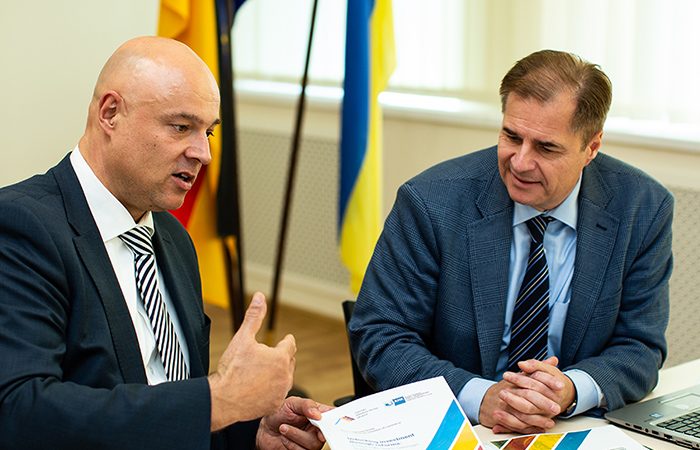After losing its largest market as a result of the ongoing conflict with Russia, Ukraine has lost no time in seeking out new destinations, leveraging on the DCFTA to build closer trade ties with Europe
As Ukraine shifts away from Russia and embraces Europe, the EU is now its largest trading partner, accounting for around 40 percent of its annual trade. With the government’s reform program now in its fourth year, and the Deep and Comprehensive Free Trade Agreement (DCFTA) with the EU now three years old, the Ukrainian economy is in strong spirits, recently posting its 11th consecutive quarter of growth.
It’s a far cry from the state of play in 2014, when the country’s economy was brought to its knees following the Euromaidan revolution, the annexation of Crimea by Russia, and the war in Donbass.
“At the time of Russia’s invasion, Ukraine was not a strong or a stable economy, but at that very point, we received strong support from Germany, and personally from Chancellor Angela Merkel. Germany is extremely important for us as a partner both in terms of politics and in terms of the economy,” says Volodymyr Groysman, prime minister of Ukraine. “Following the 2014 crisis, Ukrainian producers successfully reoriented from Russian to other markets, including the EU and Germany. That is why now Germany is our first trade partner in Europe and second in the world.”

Today, Germany and Ukraine are stepping up their partnership in trade, technology transfer and investment in innovation. The German-Ukrainian Chamber of Industry and Commerce (AHK Ukraine), which opened in Kiev in 2016, now supports about 2,000 German companies operating in sectors from light industry to agriculture. The presence of German firms is also enabling Ukraine to make the most of the EU DCFTA. “Germany is helping Ukrainian manufacturers harmonize their standards to the requirements of global markets. The AHK, jointly with German companies, is very active in teaching Ukrainian producers how to be successful in EU markets,” says Andreas Lier, president of AHK Ukraine.
The DCFTA is widely seen among Ukrainian officials as a roadmap for change. Not only does it give businesses from Ukraine greater access to EU markets, but European companies can trade more freely with Ukraine, boosting competition and raising standards. The country has been aligning its legislation with that of the EU in order to ensure its exporters can venture into European markets, while an EU visa waiver program implemented in mid-2017 has been hailed by the Ukrainian government as the latest in a series of steps bringing Ukraine into the wider European family.
Ukraine aims to build on its competitive, educated labor force, abundant natural resources and favorable geographical location to become a competitive, integral part of the European continental supply chain. Plans are already underway to boost export earnings by moving up the value chain, with electrical machinery export growth now outstripping that of raw metal ore exports. With exports to Germany increasing by 25 percent in 2017 alone, Ukraine has proved that reorienting an entire exporting sector from east to west can be done – and done well.
In brief
In recognition of Ukraine’s progress in stabilizing its economy, the International Monetary Fund (IMF) approved a new financing package for the country on December 18. “The Ukrainian authorities have successfully restored macroeconomic stability and growth, with support from the international community. Prudent fiscal and monetary policies and a flexible exchange rate regime have helped reduce fiscal and current account deficits. Reserves have been partly rebuilt and confidence has improved,” said David Lipton, acting chair of the IMF’s executive board, in a statement.